At 65 postlarvae per liter, improved feed and culture system utilization resulted
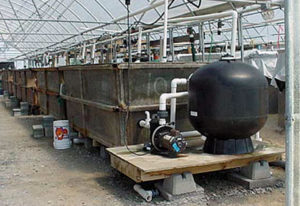
Two-phase culture systems are becoming more common as culture intensity for marine shrimp increases. In these systems, postlarvae (PL) from hatcheries are transferred to nursery tanks for one to four weeks before being transferred to production ponds. The inclusion of a nursery phase is a significant management strategy that has been implemented by many shrimp farmers in tropical regions and is becoming standard practice in subtropical regions.
Indoor shrimp nurseries are often encouraged, especially prior to intensive and superintensive shrimp culture. Their potential benefits in subsequent grow-out include better control of stock inventory, better management of feed inputs, reduced predation, and the ability to extend the growing season. Since penaeid shrimp seem less susceptible to certain viral infections as they grow older, nurseries have also been recommended for biosecurity reasons.
Alabama research
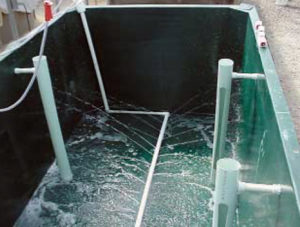
Suitable nursery protocols that optimize shrimp performance in indoor nurseries are available, but information linking various nursery practices with shrimp performance during the following pond production phase is limited. Consequently, the authors recently conducted a series of experiments at the Claude Poteet Mariculture Center in Gulf Shores, Alabama, USA, to evaluate the influences of nursery stocking rates and nursery duration on production characteristics in the nursery and subsequent pond grow-out.
Seedstock
High-health Pacific white shrimp (Litopenaeus vannamei) PL6-8 were purchased from commercial hatcheries in Texas and Florida for the experiments. To ensure accurate distribution of PL among treatments and verify the quantity of PL supplied, animals were quantified volumetrically before stocking.
Nursery
The nursery phase of each experiment was conducted in 3.0 x 1.5 x 0.9-meter fiberglass tanks located inside an unheated greenhouse. The system design and management were similar to those of commercial operations.
Commercial feeds were offered four times daily. Feeding rates were adjusted every three days. They started at a rate of 50 percent of the estimated biomass and gradually reduced to 15 percent by the last feedings. Feed sizes varied from an initial 400 µ to a final size of 1,800 µ.
Before harvest, juveniles were acclimated to the salinity of the grow-out ponds over a 24-hour period. For the nursery harvest, PL were captured by hand nets and quantified gravimetrically.
Stocking density
In experiment 1, replicate tanks were stocked at densities of 25, 38 and 65 PL per liter. The higher densities were obtained by reducing the water depth, thus decreasing the tank volumes. The first nursery period lasted three weeks.
In experiment 2, three groups of PL were procured from the same hatchery. The first group was stocked into replicate tanks at a density of 30 PL per liter and nursed for 21 days. A week after receiving the first group, a second group of PL were stocked into replicated tanks at the same density and nursed for 14 days. Two weeks later, a third group was received for direct stocking.
Pond grow-out
Animals from each of the three treatments were stocked into 0.1-ha replicate ponds at a density of approximately 35 shrimp per m2. The ponds were lined with high-density polyethylene sheeting covered with a 25-cm layer of sandy loam soil. Pond management consisted of minimal water exchange, primarily to replace evaporation losses.
Each pond had a 1-hp spiral paddlewheel aerator. Aerators were operated as needed to maintain oxygen concentrations above a critical limit of 3 milligrams per liter. The culture period for the first experiment was 12 weeks and 16 weeks for the second experiment.
Results
Results from experiment 1 suggested that nursery densities of 25 and 38 PL per liter had no influence on subsequent growth and survival during grow-out (Table 1). However, at 65 PL per liter, improved feed and culture system utilization resulted, and a significantly higher biomass loading (1.3 kilograms per cubic meter) and highest observed survival (61 percent) were obtained.
Zelaya, Production characteristics of three nursery densities, Table 1
| Density (PL/l) 25 | Density (PL/l) 38 | Density (PL/l) 65 | Density (PL/l) Pr > F |
|
|---|---|---|---|---|
| Nursery Phase | ||||
| Final average weight (mg) | 19.2a | 18.5a | 21.5a | 0.7072 |
| Survival (%) | 49b | 58a | 61a | 0.0182 |
| Feed-conversion ratio | 1.4a | 1.6a | 1.1b | 0.0362 |
| Biomass loading (kg/m3) | 0.4b | 0.5b | 1.4a | 0.0002 |
| Coefficient of variation (%) | 106.3a | 156.0a | 66.6a | 0.2000 |
| Growout Phase | ||||
| Final average weight (g) | 10.7b | 13.6a | 12.5ab | 0.079 |
| Survival (%) | 83a | 68b | 89a | 0.035 |
| Feed-conversion ratio | 2.1a | 2.1a | 1.6a | 0.243 |
| Yield (kg/ha) | 2,914b | 3,193b | 4,091a | 0.070 |
| Coefficient of variation (%) | 23.56a | 13.91b | 14.08b | 0.010 |
Nutrients and feed
The tank environments were highly nutrient-enriched, reflecting the water volumes and feeding rates used. The increased aeration had no effect on the dissolved oxygen levels in the water.
As the biomass loading in the tanks increased and more feed was supplied, an increase in water circulation was helpful to keep feed particles suspended. PL from the best-performing nursery treatments had significantly higher yields and better observed feed conversion during grow-out.
Nursery duration
When comparing nursery periods in experiment 2 (Table 2), the 21-day period produced larger juveniles and improved nursery biomass loading. Under the grow-out conditions that followed, nursed juveniles did not differ significantly in production characteristics and population size distribution from shrimp stocked directly from the hatchery. One benefit of headstarting PL, however, was that it extended the period during which PL could be acquired from the hatchery, helping prevent possible shortages in supply as the warmer season began.
Zelaya, Production characteristics for a nursery and growout phase, Table 2
| Nursery Length (days) 14 | Nursery Length (days) 21 | Nursery Length (days) Direct | Nursery Length (days) Pr > F |
|
|---|---|---|---|---|
| Nursery Phase | ||||
| Final average weight (mg) | 10.5a | 16.4a | 1.23 | 0.138 |
| Survival (%) | 94.7a | 91.2a | – | 0.628 |
| Feed-conversion ratio | 1.6a | 1.5a | – | 0.719 |
| Final biomass (kg/m3) | 1.42a | 2.67b | – | 0.011 |
| Coefficient of variation (%) | 53.8a | 70.8a | 58.5 | 0.054 |
| Growout Phase | ||||
| Final average weight (g) | 16.87a | 15.37a | 14.99a | 0.680 |
| Survival (%) | 62 | 63 | 64 | 0.929 |
| Feed-conversion ratio | 2.5a | 2.7a | 2.7a | 0.680 |
| Yield (kg/ha) | 4,005a | 3,592a | 3,374a | 0.355 |
| Coefficient of variation (%) | 16.8a | 17.3a | 18.2a | 0.601 |
Size distribution
Previous research (Stern and Lettelier, 1992; Garza, 2001) has shown a clear improvement in the size distribution of nursed shrimp. In these nursery trials, the authors observed through calculated coefficients of variation (CV) an improvement of the population size distribution from the nursery to a more uniform distribution (lower CV) during the grow-out phase. However, the direct-stocking treatment in the second trial also showed such an improvement, and its animal size variation did not differ significantly from the nursery treatments.
Conclusion
The choice to include a nursery phase or directly stock in any production cycle is a complex decision. Based on experimental results, the authors recommend the use of unheated greenhouse nursery tanks to expand the time when PL can be purchased, possibly avoiding peak demand periods.
Test results showed slight but not significant increases in final weights and biomass during grow-out when nursed shrimp were used. Since size variability translated from the nursery to the pond, any positive management change in the nursery could help reduce variation in the grow-out phase.
(Editor’s Note: This article was originally published in the April 2004 print edition of the Global Aquaculture Advocate.)
Now that you've reached the end of the article ...
… please consider supporting GSA’s mission to advance responsible seafood practices through education, advocacy and third-party assurances. The Advocate aims to document the evolution of responsible seafood practices and share the expansive knowledge of our vast network of contributors.
By becoming a Global Seafood Alliance member, you’re ensuring that all of the pre-competitive work we do through member benefits, resources and events can continue. Individual membership costs just $50 a year.
Not a GSA member? Join us.
Authors
-
Oscar Zelaya
Department of Fisheries and Allied Aquaculture
203 Swingle Hall
Auburn University
Auburn, Alabama 36830-5419 USA[109,111,99,46,111,111,104,97,121,64,109,122,100,111]
-
David B. Rouse, Ph.D.
Department of Fisheries and Allied Aquaculture
203 Swingle Hall
Auburn University
Auburn, Alabama 36830-5419 USA -
D. Allen Davis, Ph.D.
Department of Fisheries and Allied Aquaculture
203 Swingle Hall
Auburn University
Auburn, Alabama 36830-5419 USA
Tagged With
Related Posts
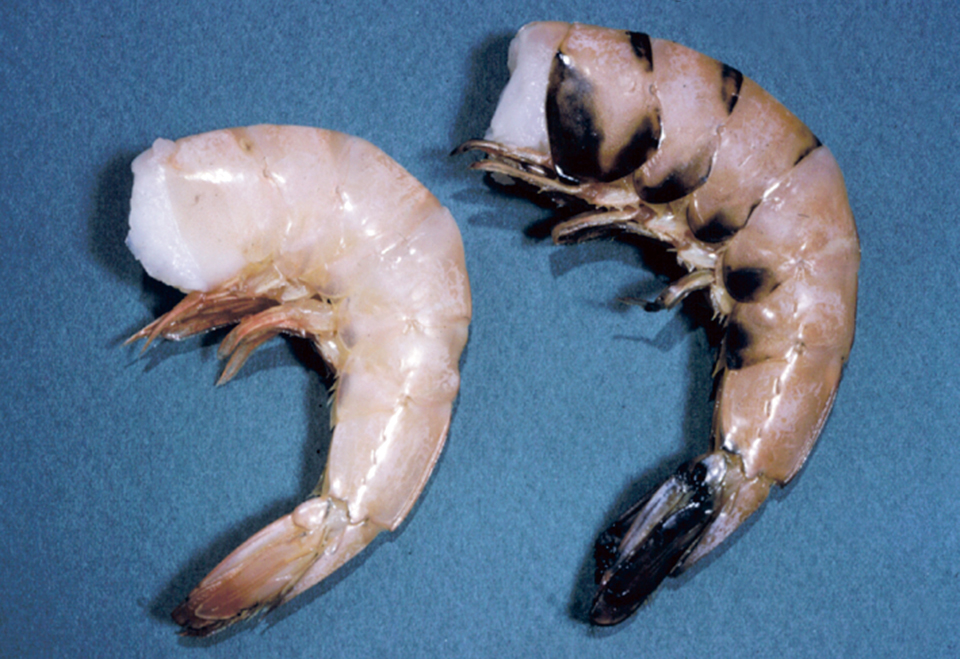
Intelligence
4-hexylresorcinol: sulfite-free control for melanosis in crustaceans
4-hexylresorcinol in a nonsulfite processing treatment against melanosis in crustaceans inhibits natural enzymes for shell hardening.
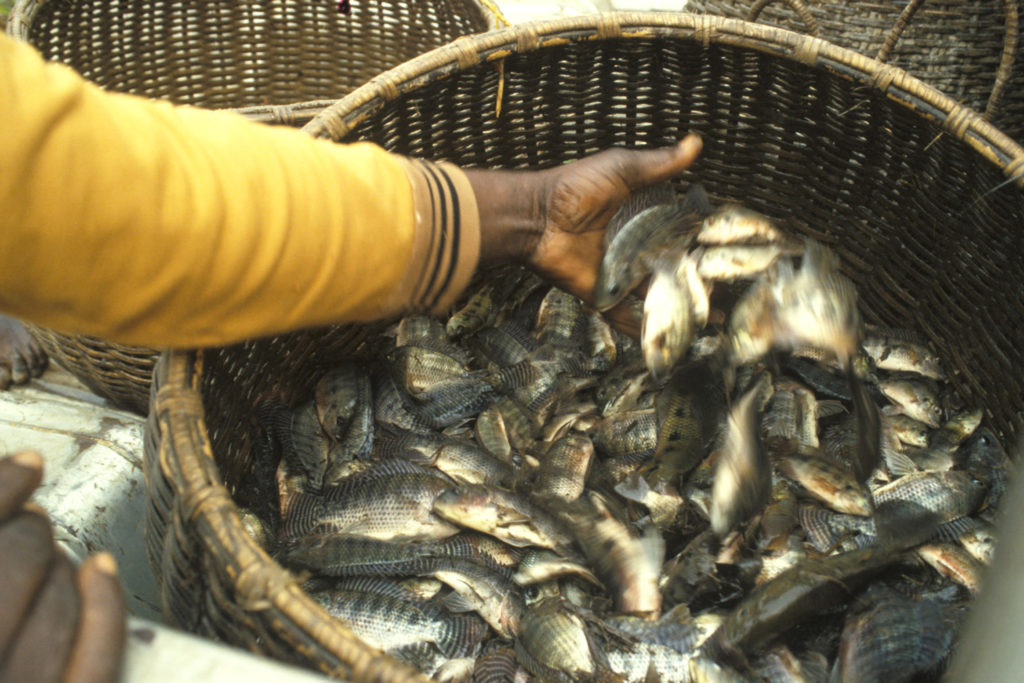
Responsibility
A helping hand to lend: UK aquaculture seeks to broaden its horizons
Aquaculture is an essential contributor to the world food security challenge, and every stakeholder has a role to play in the sector’s evolution, delegates were told at the recent Aquaculture’s Global Outlook: Embracing Internationality seminar in Edinburgh, Scotland.
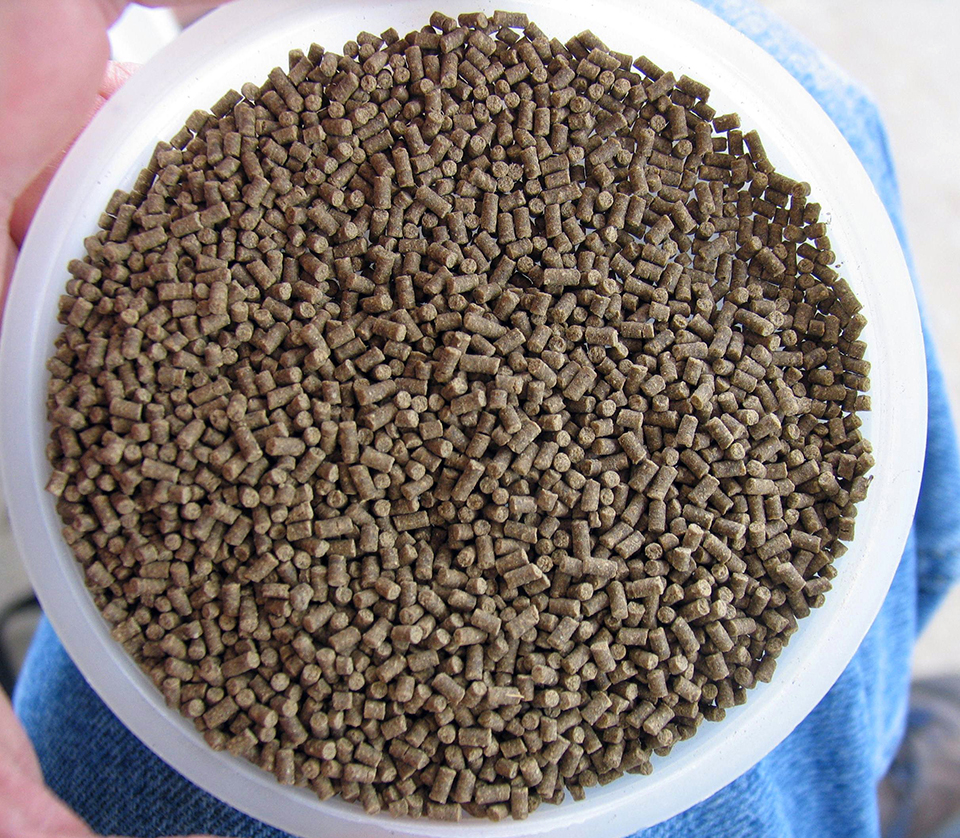
Health & Welfare
A case for better shrimp nutrition
Shrimp farm performance can often be below realistic production standards. Use proven nutrition, feeds and feeding techniques to improve profitability.

Health & Welfare
A holistic management approach to EMS
Early Mortality Syndrome has devastated farmed shrimp in Asia and Latin America. With better understanding of the pathogen and the development and improvement of novel strategies, shrimp farmers are now able to better manage the disease.


